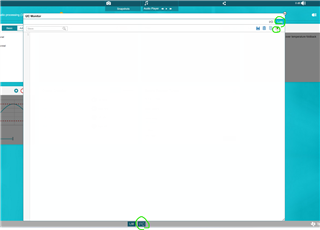Other Parts Discussed in Thread: TAS5827
Tool/software:
I've got a board with 4 TAS585M chips. They pass audio as expected when configured with PurePath tool. But, as each chip is configured, the idle current goes up about 110mA per chip @24V PVDD. That's 2.64W for each chip. It is only this high if there is SCLK going to the chip. I see the same behavior on the TAS5825EVM board.
I think most of the power is being dissipated in the output filter inductors. They get fairly hot with no audio playing. I'm using the same inductors as the EVM BOM calls out, and see the same heating on my board as on the EVM. I did notice this idle current drops to about 80mA if I set the PWM clock from 384KHz to 768KHz.
Is this expected behavior? It seems much higher than the data sheet led me to believe, but I realize it is not spec'd at 24V.
I'm also seeing another issue. SDOUT does not output a signal. This is whether the origin is set to either PRE or POST EQ in PurePath. Is there some other configuration necessary to get a signal on DOUT?




